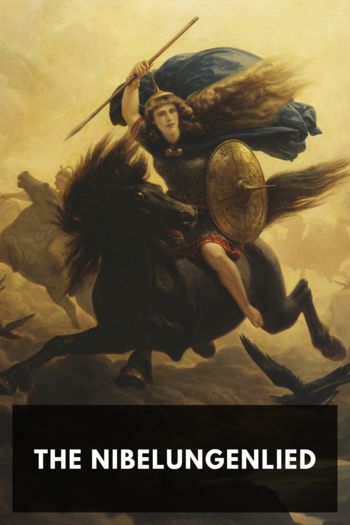The Trials of Radclyffe Hall, Diana Souhami [best sales books of all time .TXT] 📗

- Author: Diana Souhami
Book online «The Trials of Radclyffe Hall, Diana Souhami [best sales books of all time .TXT] 📗». Author Diana Souhami
The editor at Collins read it ‘with intense interest’ but rejected it. Heinemann were encouraging and regretful, Arrowsmith compared it to Flaubert, Century said No. Una then ‘boiled’ it and read the shortened version to friends. Audrey Heath sent it to ten publishers. They praised it and hoped someone else would take it. The subject matter troubled them all. Radclyffe Hall, it seemed, was imprisoned by her theme. But she was determined to get into print. Audrey advised her to write, as a first novel, something more marketable, less contentious, to light the way for The Unlit Lamp.
Radclyffe Hall came up with Chains, a title as vexing as Octopi. She wrote it in six months. Dedicated ‘To Una, with love’, its theme seemed to be that chains of love bite deep. It featured details of their domestic life. A writer with inherited wealth, Hilary/John, and his artist wife Susan/Una, let work lapse because of their relationship. All their energy gets spent on their dachshunds, cars, oak furniture and the rest. In an effort to break these shackles, they move from their country mansion to a London townhouse. They store their things in Taylor’s Depository. They dance in the Cave of Harmony, take a trip to Italy, then try to part to find their individual worth as artists.
Romaine was a pivotal character in the story. Even the title came from the artist’s mark she used on her drawings – a wing held down by a chain. John resisted any romantic involvement with her in life. In her book she flirted freely. Romaine was Venetia Ford, ‘the strange erratic brilliant genius of whom Susan had heard so much in the old days at the Slade’. She paints monotone portraits, has a dominating personality, studios in London and in the rue Bonaparte in Paris and a villa in Capri. She appears at a party:
One of the women was beautiful with an elusive, inward kind of beauty. Her immense black eyes were set in a face that was technically too long … Her queer little straight nose was too short to be classical … But her mouth was the most perfect thing … the lips folded together in a soft, strong curve, with deep-set shadowy corners. Her skin was brown. She looked sun-tanned and her coal black hair, bobbed very short, was uncompromisingly straight. The face was full of curious defects, defects which seemed to combine together to make a noble and perfect whole; under it and through it and over it there was a veiled persistent glow.
Susan is wooed by Venetia Ford. Hilary goes to Canada to try to write. He is away for thirty pages. Susan knows he is insufferable and egomaniacal but she wants him back: ‘His nerves! His pictures! His books! His priceless old oak! His work! His freedom!’ They reunite in platitudes: ‘The stark femininity of all the ages looked out of her eyes into his.’ He tells her, ‘of all the chains in the world the heaviest chain is love. If we weren’t chained we’d just float about like toy balloons. The whole world’s a forge. Look at all your painters and writers and clever people. They’re all chained up as tight as you please to their talents and struggles to be famous.’
Una corrected and transcribed each day’s work. Her tone was there in the occasionally acerbic prose. She read it to Toupie who ‘howled with laughter’ at recognition of incidents in it. Una delivered the completed manuscript to Audrey Heath in June 1923. By July it was renamed The Forge and its thin later chapters padded out. By September John had signed a contract with the publisher J. W. Arrowsmith.
She hoped it would lead the way for her better book, her innovative theme. But she was over the main hurdle. She had an accepted novel, an agent and a publisher who wanted her work. An advance copy of The Forge arrived in January 1924. Una read it aloud in bed until two-thirty in the morning. Her occupation now was to build the career and reputation of Radclyffe Hall. She registered with Romeike and Curtice press cutting agency and pasted reviews into an album.
Grief for Ladye had had its day. Una was tirelessly obliging and unstinting in her praise. ‘Long hours of my reading, perpetual assurances that what she was writing surpassed all that had preceded it. Reading, correcting, typing and retyping.’
Both talked of the ‘Holy Spirit of inspiration’ and of Radclyffe Hall as a vessel through whom God was pouring His message. Una shored up her ego against any whiff of criticism, indulged her tendentious narrative and gave her a compensatory place of safety where she was always right, invincible, handsome, immortal, and first. She was a formidable acolyte, an indispensable servant, even if there was the grip of tentacles about her and the clink of chains.
15
How to treat a genius
The Forge was published on 25 January 1924. John and Una spent the day being driven in Phillida, their Buick, to London bookshops to check it was stocked and prominently displayed. For four consecutive days Una then sent postcards advertising its publication.
Tireless for publicity, they too were prominently displayed. They took first-night tickets – centre stalls – for all the West End shows. In a week they went to Sport of Kings at the Savoy, The Claimant at the Queens, Morals at the Little Theatre, The Way Things Happen, The Fairy Tale. Photographs of ‘the





Comments (0)